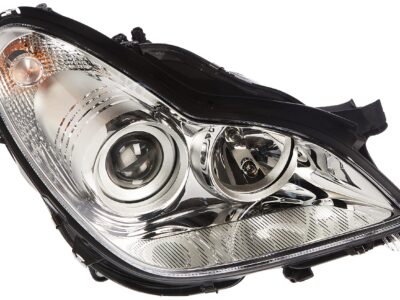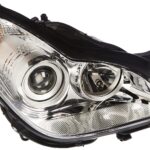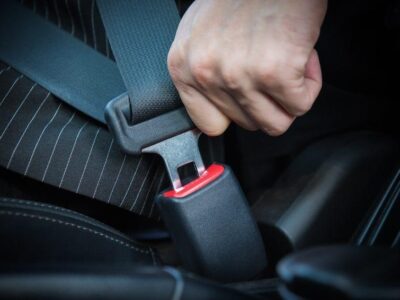
Tips for Maintaining the Fiat Panda’s Interior Trim and Upholstery

The Fiat Panda is a popular city car known for its ruggedness and practicality, but like any vehicle, its interior requires regular maintenance to keep it looking its best. The interior trim and upholstery are prone to wear and tear, especially with frequent use. To help owners preserve their Panda's interior, here are some valuable tips on maintaining the trim and upholstery. By following these simple guidelines, you can extend the life of your car's interior and keep it looking like new, thereby maintaining the overall comfort and aesthetic appeal of your vehicle. Regular care is essential.
Maintaining the Fiat Panda's Interior Trim and Upholstery: Essential Tips
To keep your Fiat Panda's interior looking its best, it's crucial to maintain both the trim and upholstery. The interior of your vehicle is not just about aesthetics; it's also about comfort and durability. Regular maintenance can prevent wear and tear, ensuring your car's interior remains in good condition for years to come.
Cleaning the Interior Trim
The interior trim of your Fiat Panda can be made from various materials, including plastics, wood, and metal. Regular dusting is essential to prevent the buildup of dirt and dust, which can lead to scratches and damage. Use a soft, dry cloth to wipe down trim pieces, and for more stubborn dirt, a slightly damp cloth can be used. Avoid using harsh chemicals or abrasive cleaners, as they can damage the trim's finish.
| Trim Material | Recommended Cleaner | Avoid |
|---|---|---|
| Plastic | Mild soap solution | Abrasive cleaners |
| Wood | Wood-specific cleaner | Excessive moisture |
| Metal | Damp cloth | Corrosive substances |
Upholstery Care
The upholstery in your Fiat Panda is prone to wear and tear, especially if you use your car frequently. Regular vacuuming is a simple yet effective way to maintain your car's upholstery. For fabric upholstery, use a gentle fabric cleaner to remove stains, and for leather, a leather conditioner can help keep it supple and prevent cracking. Always test a small, inconspicuous area first to ensure the cleaner doesn't damage the material.
| Upholstery Type | Cleaning Method | Additional Care |
|---|---|---|
| Fabric | Gentle fabric cleaner | Regular vacuuming |
| Leather | Leather cleaner | Leather conditioner |
Protecting the Interior from Sun Damage
Prolonged exposure to sunlight can cause the interior of your Fiat Panda to fade and become brittle. Using sunshades or window visors can help block direct sunlight when your car is parked. Additionally, applying a UV protectant to the dashboard and other trim pieces can provide an extra layer of protection against sun damage. This can help maintain the appearance and longevity of your car's interior.
| Protection Method | Benefits | Application Frequency |
|---|---|---|
| Sunshades/Window Visors | Blocks direct sunlight | As needed |
| UV Protectant | Prevents fading and brittleness | Every 3-6 months |
What are the most common problems with a used Fiat Panda hatchback?

The Fiat Panda is a popular city car known for its compact size and versatility. However, like any used vehicle, it can come with its own set of problems. Some of the most common issues with a used Fiat Panda hatchback include reliability concerns, electrical faults, and mechanical problems.
Reliability and Mechanical Issues
The Fiat Panda has had its fair share of reliability issues, particularly with older models. Some owners have reported problems with the engine, transmission, and other mechanical components. These issues can be costly to repair and may be a concern for potential buyers.
- Engine problems, such as oil leaks and faulty timing chains
- Transmission issues, including slipping and failure to engage gears
- Clutch failure, which can be expensive to replace
Electrical and Electronic Faults
Electrical faults are another common problem with the Fiat Panda. These can range from minor issues, such as faulty lights or indicators, to more serious problems, such as issues with the car's computer system. Electrical faults can be difficult to diagnose and repair, and may require specialized equipment.
You may be interested in reading How to Fix Fiat Panda Headlight Failures: Step-by-Step Guide
How to Fix Fiat Panda Headlight Failures: Step-by-Step Guide- Faulty dashboard lights or gauges
- Problems with the car's infotainment system
- Issues with the car's alarm or immobilizer system
Common Wear and Tear Issues
Like any vehicle, the Fiat Panda is subject to wear and tear over time. Some of the most common issues include worn-out brake pads, faulty suspension components, and worn-out tires. Regular maintenance can help to minimize these problems, but they can still occur even with proper care.
- Worn-out brake pads or discs
- Faulty shock absorbers or other suspension components
- Uneven tire wear, which can lead to reduced traction and increased risk of a blowout
How often should Fiat Panda be serviced?

The Fiat Panda is a reliable vehicle, but like any other car, it requires regular servicing to maintain its performance and extend its lifespan. The frequency of servicing depends on various factors, including the model year, mileage, and driving conditions. Generally, the manufacturer recommends servicing the Fiat Panda every 12,000 to 18,000 miles or once a year, whichever comes first.
Factors Affecting Service Frequency
The service frequency of the Fiat Panda can be influenced by several factors, including driving habits and environmental conditions. For example, driving in extreme temperatures, towing a trailer, or driving in stop-and-go traffic can all impact the vehicle's maintenance needs.
- Driving in dusty or sandy conditions can increase the need for more frequent air filter replacements.
- Driving in areas with high levels of air pollution can lead to more frequent oil changes.
- Driving in extreme temperatures can affect the vehicle's battery and other components.
Recommended Maintenance Schedule
To keep the Fiat Panda in good condition, it's essential to follow a recommended maintenance schedule. This typically includes routine checks and replacements of essential components, such as oil, filters, and brake pads.
- Oil and filter changes every 12,000 miles or once a year.
- Tire pressure checks and adjustments every 6,000 miles.
- Brake pad inspections every 12,000 miles.
Importance of Regular Servicing
Regular servicing is crucial to maintaining the Fiat Panda's performance, safety, and overall condition. By staying on top of routine maintenance, owners can help prevent costly repairs, reduce the risk of breakdowns, and ensure the vehicle remains reliable.
- Regular servicing helps identify potential issues before they become major problems.
- It ensures the vehicle remains safe to drive and reduces the risk of accidents.
- It helps maintain the vehicle's performance and fuel efficiency.
When should the timing belt be changed on a Fiat Panda?
The timing belt in a Fiat Panda is a critical component that synchronizes the rotation of the crankshaft and camshaft, ensuring that the engine's valves open and close at the right time. The timing belt is subject to wear and tear over time, and if it fails, it can cause significant damage to the engine. The recommended interval for changing the timing belt on a Fiat Panda varies depending on the model year, engine type, and other factors.
Factors Affecting Timing Belt Replacement
The timing belt replacement interval is influenced by several factors, including the type of engine, driving conditions, and maintenance history. For example, driving in extreme temperatures, towing a trailer, or driving in stop-and-go traffic can reduce the lifespan of the timing belt.
You may be interested in reading How to Fix Fiat Panda Headlight Failures: Step-by-Step Guide
How to Fix Fiat Panda Headlight Failures: Step-by-Step Guide Troubleshooting Fiat Panda Electrical Issues: Common Causes and Solutions
Troubleshooting Fiat Panda Electrical Issues: Common Causes and Solutions- Engine type: Different engines have different timing belt replacement intervals.
- Driving conditions: Harsh driving conditions can reduce the lifespan of the timing belt.
- Maintenance history: Regular maintenance, such as oil changes, can help extend the life of the timing belt.
Recommended Replacement Intervals
For Fiat Panda models, the recommended timing belt replacement interval typically ranges from 60,000 to 105,000 miles, depending on the engine type and model year. It's essential to consult the owner's manual or consult with a mechanic to determine the recommended replacement interval for a specific vehicle.
- Check the owner's manual for the recommended replacement interval.
- Consult with a mechanic or a Fiat dealership for guidance.
- Keep track of the vehicle's maintenance history to ensure the timing belt is replaced at the recommended interval.
Signs of a Worn-Out Timing Belt
It's crucial to be aware of the signs of a worn-out timing belt, such as cracks, frays, or uneven wear. If any of these symptoms are noticed, the timing belt should be replaced as soon as possible to avoid engine damage.
- Inspect the timing belt for visible signs of wear, such as cracks or frays.
- Listen for unusual noises coming from the timing belt area.
- Monitor the engine's performance for any signs of timing belt failure, such as misfires or rough idling.
How long do Fiat Pandas last?

The lifespan of a Fiat Panda largely depends on various factors such as maintenance, driving conditions, and model year. Generally, with proper care and regular maintenance, a Fiat Panda can last for a considerable amount of time. The durability of the vehicle is influenced by how well it is serviced, the driving habits of the owner, and the conditions it is exposed to.
Factors Influencing Longevity
The longevity of a Fiat Panda is affected by several key factors. Regular maintenance plays a crucial role in extending the life of the vehicle. This includes routine checks on the engine, transmission, and other vital components. Additionally, driving conditions such as extreme temperatures, exposure to salt on roads, and driving on rough terrain can impact the vehicle's lifespan.
- Regular servicing to prevent wear and tear
- Avoiding extreme driving conditions
- Promptly addressing any issues that arise
Common Issues Affecting Lifespan
Some Fiat Panda models have been known to experience certain issues that can affect their lifespan. These include problems with the transmission, engine, and electrical systems. Addressing these issues promptly is crucial to preventing them from becoming major problems. Moreover, some model years are more prone to certain issues than others.
- Transmission problems in early models
- Engine issues due to poor maintenance
- Electrical faults in certain trim levels
Maintenance Tips for Longevity
To maximize the lifespan of a Fiat Panda, owners should adhere to a strict maintenance schedule. This includes regular oil changes, checking and replacing the air filter as needed, and monitoring the condition of the brakes. Furthermore, keeping the exterior and interior clean and protected can help prevent deterioration.
- Regular oil changes to keep the engine lubricated
- Checking the condition of tires and brakes regularly
- Keeping the vehicle clean and protected from the elements
Frequently Asked Questions
What is the best way to clean the Fiat Panda's interior trim?
To clean the Fiat Panda's interior trim, use a soft, dry cloth to wipe away any dirt or dust. For more stubborn stains, a mild soap solution can be used, but be sure to test it on a small, inconspicuous area first. Avoid using harsh chemicals or abrasive materials that can damage the trim's finish. Regular cleaning will help maintain the trim's appearance and prevent damage.
How can I protect the Fiat Panda's upholstery from spills and stains?
To protect the Fiat Panda's upholstery, consider applying a fabric protector or stain repellent. These products can help repel liquids and prevent stains from setting in. Additionally, be sure to clean any spills immediately, and avoid eating or drinking in the vehicle to minimize the risk of accidents. Regular vacuuming and cleaning can also help maintain the upholstery's appearance.
You may be interested in reading How to Fix Fiat Panda Headlight Failures: Step-by-Step Guide
How to Fix Fiat Panda Headlight Failures: Step-by-Step Guide Troubleshooting Fiat Panda Electrical Issues: Common Causes and Solutions
Troubleshooting Fiat Panda Electrical Issues: Common Causes and Solutions Fiat Panda Oil Consumption Problems: What You Need to Know
Fiat Panda Oil Consumption Problems: What You Need to KnowWhat type of cleaning products should I avoid using on the Fiat Panda's interior?
Avoid using harsh chemicals, abrasive cleaners, or strong detergents on the Fiat Panda's interior, as these can damage the trim, upholstery, or other surfaces. Also, avoid using products that contain bleach or ammonia, as these can cause discoloration or damage to certain materials. Instead, opt for mild, pH-neutral cleaners that are specifically designed for cleaning automotive interiors.
How often should I clean and condition the Fiat Panda's interior?
The frequency of cleaning and conditioning the Fiat Panda's interior depends on usage and environmental conditions. As a general rule, clean the interior every 1-2 weeks, and condition the leather or vinyl surfaces every 3-6 months. Regular maintenance will help maintain the interior's appearance, prevent damage, and extend its lifespan. Be sure to check the owner's manual for specific recommendations.

If you want to know other articles similar to Tips for Maintaining the Fiat Panda’s Interior Trim and Upholstery you can visit the category Fiat Panda.
Deja una respuesta






More content of your interest